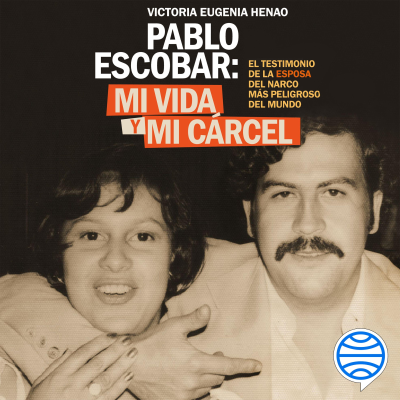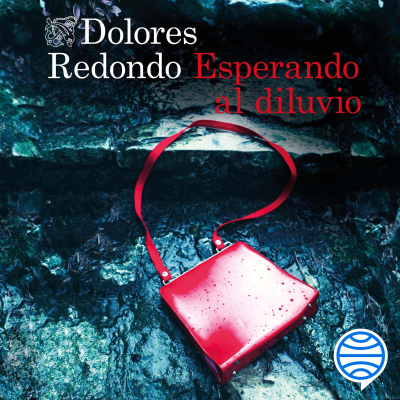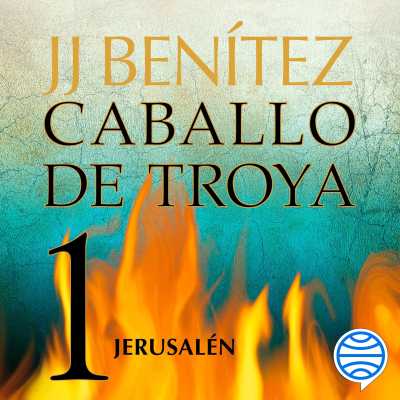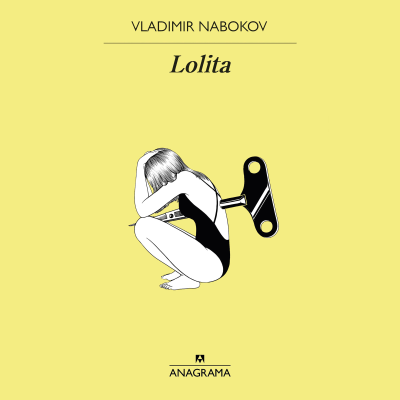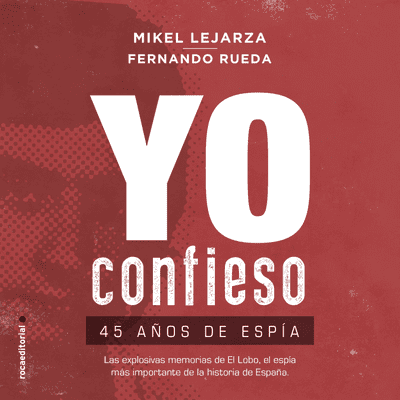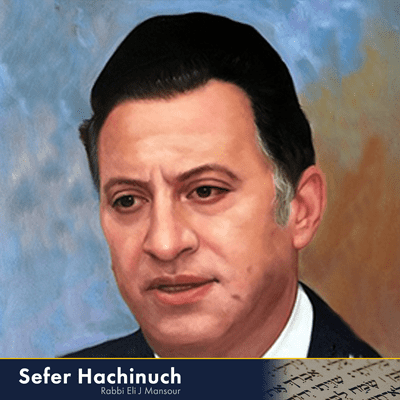
Sefer Hachinuch
Podcast de Rabbi Eli Mansour
Empieza 7 días de prueba
$99 / mes después de la prueba.Cancela cuando quieras.

Más de 1 millón de oyentes
Podimo te va a encantar, y no estás solo/a
Valorado con 4,7 en la App Store
Acerca de Sefer Hachinuch
Sefer Hachinuch Daily - delivered directly to your computer and/or mobile device
Todos los episodios
25 episodiosThe final of the 613 Misvot, as listed by the Sefer Ha’hinuch, is the command to write a Sefer Torah. This Misva is introduced in Parashat Vayelech (Debarim 30:19), where Hashem commands, “Ve’ata Kitbu Lachem Et Ha’shira Ha’zot” (“And now, write for yourselves this song”). The Gemara teaches that it is “praiseworthy” to write a Sefer Torah oneself, if he can, and that one who does is considered as though he stood at Mount Sinai and received the Torah. If, however, one is not capable of writing his own Sefer Torah, then he may hire a Sofer (scribe) to write one for him. The Sefer Ha’hinuch explains that the Torah commanded writing for oneself a Sefer Torah for the simple reason that this ensures access to a Sefer Torah from which to study. Since everyone is commanded to write a Sefer Torah, everyone will have a Sefer Torah to learn from, without having to go borrow one, and this will help ensure that a person spends time learning. The more accessible something is, the more likely one is to use it, and so the Torah wanted that we all have access to a Sefer Torah, as this will helps guarantee that we learn Torah. Halacha requires one to write his own Sefer Torah even if he inherited one from his father, and the Sefer Ha’hinuch explains that this provision serves to ensure a plethora of Sifreh Torah. Not everybody can afford a Sefer Torah, and so the Torah wanted everyone – even those who already have a Sefer Torah – to write one, such that there would be Sifreh Torah available for those who do not have one. Additionally, the Sefer Ha’hinuch writes, Sifreh Torah gradually wear out, and the ink fades, and so the Torah wanted people to write their own Sifreh Torah, in order for the Torah scrolls to be new and in good condition. The Sefer Ha’hinuch writes that although the Biblical command refers specifically to the writing of a Sefer Torah, there is certainly value also in having other works of Torah literature written. Even if one received such books from his predecessors, it is a Misva to have more Torah books produced. The Sefer Ha’hinuch writes that it was customary among righteous people to allocate a room in their home where scribes, whom they hired, would write Torah books. (Of course, the Sefer Ha’hinuch lived before the invention of the printing press, and thus all books had to be handwritten.) In discussing this Misva, the Sefer Ha’hinuch presents a number of Halachot relevant to the way a Sefer Torah should be written. He writes that a space the size of the letter Yod must be left in between each pair of adjacent words, and an empty space the size of a line of text must be left in between the lines. Each line should consist of thirty letters. The allusion given for this practice is the word “Le’mishpehotechem” (“according to your families”) written three times. This word consists of ten letters, and so three times this word teaches us the total of number of letters that should be written on each line of the Sefer Torah. The Rabbis of the Mussar movement taught that this allusion expresses the notion that if a person, his son and grandson all learn Torah, then he is guaranteed that Torah will remain in his family for all time. The Sages inferred this concept from the verse in the Book of Yeshayahu (59:21), “And these words, which I have placed in your mouth, shall not be removed from your mouth, from the mouth of your offspring, or from the mouth of your offspring’s offspring…from now and forever” – indicating that once Torah is studied by three generations, it remains in that family for eternity. The three instances of “Le’mishpehotechem” hint to this concept, that after three generations of Torah study, the family is assured of having the Torah remain with it forever. A line in the Sefer Torah should not consist of fewer than thirty letters, as this would resemble an “Iggeret” (formal letter), and the Sefer Torah is to be a book. A line should not consist of more than thirty letters, as it would then be difficult to find the next line, since the beginning and end of the lines would be very far apart. If a word at the end of the line has five letters, but there’s room for only three letters, then the extra two letters may be written outside the column. If there is room for only two letters, then those two spaces should be left empty, and the word should be written on the next line. Although two letters may be written outside the column in the case described above, a two-letter word should not be written outside the column. Tradition requires writing certain letters larger or smaller than the rest of the text. Also, certain letters are written with specific numbers of “Tagin” (“crowns”) above the letters. These laws apply only “Le’chatehila” (optimally). If the “Tagin” were not placed correctly, or if the lines were too close or too far from one another, or too lengthy or too short, the Sefer Torah is nevertheless valid, as long as the letters were written properly. This Misva applies in all places and in all time periods. The Sefer Ha’hinuch maintains that this Misva is binding only upon men, because this obligation is linked to the obligation to study Torah – as discussed above – and women are exempt from the Misva of Torah study. One who was able to write a Sefer Torah but failed to do so has neglected this affirmative command. The Sefer Ha’hinuch warns that such a person is deserving of harsh punishment, as fulfilling this Misva is necessary for learning Torah. Conversely, one who fulfills this Misva is rewarded with blessing and will be enriched by the ability to study. Many Rabbis addressed the question of why most people do not write a Sefer Torah, or even hire somebody to write a Sefer Torah for them. If, as we have seen, writing a Sefer Torah constitutes a Biblical obligation, then why do otherwise G-d-fearing people not write Torah scrolls for themselves? A famous answer to this question is given by the Rosh (Rabbenu Asher Ben Yehiel, Germany-Spain, 1250-1327). He notes that whereas in earlier generations, people would use Sifreh Torah as their texts of Torah study, nowadays, we study from other books. Sifreh Torah are used only for the public reading in the synagogue, and we learn from printed Humashim and other Torah texts. Therefore, the Rosh writes, nowadays, we fulfill this Misva by obtaining texts of Torah literature to learn. The Sefer Ha’hinuch, as mentioned earlier, commented that having such books fulfills the spirit of the Misva of writing a Sefer Torah, but according to the Rosh, this is how we fulfill the actual Misva, since these texts are what we use for learning. According to the Rosh, then, we all fulfill this Misva by having works of Torah literature in our homes. We find among later Poskim different opinions as to how to understand the Rosh’s position. The Perisha (commentary to the Tur by Rav Yehoshua Falk, Poland, 1555-1614) maintained that according to the Rosh, one who writes a Sefer Torah nowadays, but does not acquire other texts, does not fulfill the Biblical obligation. Since we do not use Sifreh Torah for learning, one cannot satisfy his obligation through the writing of a Sefer Torah, and he must acquire texts from which to study. The Perisha went even further, stating that having only a Sefer Torah is an insult to the Torah. Since we no longer have the tradition of how to interpret the “Tagin” and other features of the Torah text, one who has only a Torah scroll, and no works of Torah literature, is bound to misunderstand the Torah. The Bet Yosef (commentary to the Tur by Maran Rav Yosef Karo, Spain-Israel, 1488-1575), however, disagreed. In his view, the Rosh concedes that the primary Misva is to write a Sefer Torah, but he also allows fulfilling the Misva by acquiring works of Torah literature. The Sha’agat Aryeh (Rav Aryeh Leib Ginzburg, c. 1695-1785) offers an entirely different reason for why it is not customary for everyone to write a Sefer Torah. The Gemara in Masechet Kiddushin (30) states that some minor elements of the tradition for writing a Sefer Torah have been lost. We cannot definitively ascertain the precise spelling of a small number of words, whether they should be written with or without the letter “Vav.” Therefore, the Sha’agat Aryeh writes, we cannot fulfill the Torah obligation of writing a Sefer Torah, since we lack the knowledge necessary to ensure that the text is written correctly. The Torah reading in the synagogue is not a Biblical obligation, but rather a practice enacted by the prophets, and so we can observe this practice even if the text of the Sefer Torah is not precisely accurate. But writing a Sefer Torah constitutes a Biblical obligation, and it thus cannot be fulfilled, due to our lack of knowledge regarding the precise spelling of all the words. For this reason, the Sha’agat Aryeh avers, it is not customary for everyone to write a Sefer Torah. Rav Moshe Feinstein, in Iggerot Moshe, disputes this line of reasoning. A famous Halachic principle establishes that “Safek De’Orayta Le’humra” – when it comes to Torah obligations, we must act stringently in situations of uncertainty. Therefore, Rav Moshe argues, we should be required to write a Sefer Torah despite the uncertainties that we have regarding certain words, because of the possibility that we write them correctly. As long as there is a chance that we can fulfill the Torah obligation by writing a Sefer Torah, we should be required to do so, in accordance with the rule of “Safek De’Orayta Le’humra.” Rav Moshe therefore suggests a different reason for why people do not write a Sefer Torah, explaining that Halacha does not require incurring an exceedingly large expense for the fulfillment of a Misva. Although one must be willing to spend all the money he has if necessary to avoid transgressing a Misvat Lo Ta’aseh (Biblical prohibition), one is not required to spend more than one-fifth of his assets to fulfill a Misvat Aseh (affirmative command). For the vast majority of people, commissioning the writing of a Sefer Torah would require spending more than one-fifth of their assets, and so they are exempt. Rav Moshe then goes even further, showing that in fact one is not required to spend more than one-tenth of his assets for this Misva, as this would undermine his ability to fulfill other Misvot. Indeed, as Rav Moshe notes, the Tur (Rav Yaakob Ben Asher, Spain, 1269-1340) writes that everyone “Asher Yado Maseget” – “who can afford it” – is required to write a Sefer Torah. Now this condition, that one can afford to fulfill the Misva, applies to all affirmative commands, as mentioned. And yet, the Tur mentions this point specifically in the context of the Misva of writing a Sefer Torah. Apparently, the Tur felt that this Misva in particular is contingent upon one’s financial abilities, and one should not commission the writing of a Sefer Torah if this would compromise his fiscal ability to fulfill other Misvot. Another explanation is that some views allow fulfilling this Misva jointly with other people. Therefore, by participating in the cost of writing a Sefer Torah (such as by “purchasing” a letter, which is customary in many communities), one satisfies his obligation according to this opinion. If a person does have the privilege of commissioning a Sefer Torah, and he wants to give it to a synagogue, he should lend it, rather than giving it as a gift. Writing a Sefer Torah does not suffice for fulfilling the Misva; he must own the Torah after it is written. Therefore, one should retain ownership over his Sefer Torah, and give it to a synagogue on loan. Indeed, it is customary to write contracts to this effect when a Sefer Torah is donated, stipulating that the Sefer Torah is being lent, and not given, to the synagogue. Rav Moshe Feinstein writes that if one has a respectable place in his home where he can keep a Sefer Torah, he should do so, and he should make a point of reading some of the weekly Torah portion from the scroll each week. This way, he fulfills the Misva according to all opinions, as he writes a Sefer Torah which he occasionally uses for study.
The Torah in Parashat Vayelech (Debarim 31:12) commands that the entire nation – men, women and children – must assemble in Jerusalem for a special ceremony, called “Hakhel” (“assemble”), every seven years. This ceremony, which featured the public reading of certain sections of the Torah by the king, would take place after the conclusion of the Shemita year, on the first day of Hol Ha’moed Sukkot. The Gemara in Masechet Kiddushin (34) comments that as Hakhel constitutes a Misvat Aseh She’ha’zman Gerama – an affirmative command which applies at a particular time – it should, in principle, apply only to men. As a general rule, women are exempt from these kinds of Misvot. However, Hakhel marks an exception to this rule, as the Torah explicitly commands assembling the men, women and children. In explaining the reason behind this Misva, the Sefer Ha’hinuch writes that the entire essence of the Jewish Nation lies in the Torah. It is the Torah that distinguishes us from all other peoples. Other nations perform acts of kindness, and have houses of prayer, but the Torah is unique to Am Yisrael. And, it is the Torah that enables us to earn eternal life and the unprecedented delights of the next world. Therefore, the Sefer Ha’hinuch explains, it is worthwhile for the nation to come together at certain times in order to reaffirm its identity, to be reminded that the core essence of Am Yisrael is our commitment to the Torah. Once in seven years, a major assembly is held, and everybody will know that this assembly is being held for the purpose of conducting a public Torah reading. This will leave a profound impression on the people, reminding them of the primary importance of Torah in our lives. This awareness will arouse within the people a fierce desire to learn the Torah, and as a result of this desire, they will commit to learn the Torah intensively, thus becoming worthy of Hashem’s blessings. The king would read the Torah at Hakhel in the Ezrat Nashim section of the courtyard of the Bet Ha’mikdash. He was permitted to read the Torah while sitting, though he was deemed praiseworthy if he stood for the reading. He would read from the beginning of the Book of Debarim through the first paragraph of Shema, in Parashat Va’et’hanan, and then skip to the second paragraph of Shema, in Parashat Ekeb. He would then read from the section of “Aser Te’aser” in Parashat Re’eh through the end of the sections of the blessings and curses. Trumpets would be sounded throughout the city of Jerusalem announcing the event of Hakhel, and a large wooden stage would be erected in the middle of the Ezrat Nashim. The king would step up onto the stage, where he would be visible to the entire crowd, and everyone would assemble around the stage. The Sefer Torah would be passed around the nation’s leaders (from the “Hazan Ha’kenesset,” to the “Rosh Ha’kenesset,” to the deputy Kohen Gadol, and then to the Kohen Gadol), until it was finally handed to the king. This was done as an expression of honor for the king. The king opens the Sefer Torah, recites the Berachot, and reads the aforementioned sections. After the reading, he recites seven additional Berachot. A man or woman who was able to attend Hakhel and failed to do so, or a king who refuses to read the Torah at Hakhel, transgresses this affirmative command. The Sefer Ha’hinuch writes that those who neglect this Misva are liable to grave punishment, because Hakhel constitutes a “strong pillar” that upholds our religion, and thus failing to fulfill this Misva threatens the perpetuation of our faith. The Misva of Hakhel, as mentioned, is linked to the Misva of Shemita, as it is conducted during Sukkot after the conclusion of the Shemita year. As such, it applies only when the Misva of Shemita applies, meaning, when the majority of the Jewish Nation resides in the Land of Israel. A number of writers raised the question of why the Sages did not enact any commemoration of the Misva of Hakhel. Many other laws that apply during times of the Bet Ha’mikdash are required even nowadays, at least in some form, in commemoration of the Misva that was observed in the times of the Bet Ha’mikdash. Hakhel is an exception, as the Sages did not require any form of ceremony for us to conduct to commemorate this Misva. The Aderet (Rav Eliyahu David Rabinowitz-Teomim, 1845-1905) suggested that the Rabbis instituted commemorations for Misvot that applied during the times of both the first and second Bateh Mikdash. The Misva of Hakhel, however, requires a king, and thus it was not observed in the latter part of the Second Commonwealth, after the Jews lost sovereignty and they did not have a king. Therefore, the Sages did not enact a commemoration of Hakhel. Another explanation is that the custom observed in some communities to remain awake on the last night of Sukkot (Hoshana Rabba) reading the Book of Debarim commemorates Hakhel, the king’s reading of Debarim during Sukkot. Yet a third theory is that the custom of “Hatan Torah,” calling a distinguished member of the congregation for the reading of the final section of the Torah on Simhat Torah, commemorates Hakhel. We might add that in a certain sense, the concept of Hakhel is commemorated each and every Shabbat, when Jews congregate in the synagogue and hear the Torah reading and the Rabbi’s speech. Like during Hakhel, a large assembly gathers for the purpose of hearing and learning Torah, which reinforces our appreciation of the importance of Torah, and its centrality in our lives. The children see the tumult and excitement, as everyone has come together in the synagogue, and they understand that all this is done for the purpose of learning the Torah. They thus grow up recognizing and appreciating the singular significance of Torah, which is the core essence of Jewish identity.
The Torah in Parashat Ki-Tabo (Debarim 28:9) commands, “Ve’halachta Bi’drachav” – “You shall walk in his ways.” The Sefer Ha’hinuch writes that this verse introduces the obligation to follow G-d’s example, to conduct ourselves in accordance with the qualities that He models for us. The Gemara, in several places (including Sota 14), teaches that just as G-d is merciful, kind and compassionate, we must be merciful, kind and compassionate in our interactions and dealings with other people. Although we human beings are limited and imperfect, and are thus incapable of attaining G-d’s pristine perfection, this verse commands us to strive to follow His example. This includes performing acts of kindness for other people, just as G-d provided Adam and Hava with clothing, visited Abraham Abinu when he was ill, comforted Yishak when his father passed away, and buried Moshe Rabbenu after his death. We are to follow G-d’s example and perform these and other acts of kindness. The reason for this Misva, the Sefer Ha’hinuch writes, is obvious, as we are to constantly strive to improve our character, by working to follow the example set for us by G-d Himself. The Sefer Ha’hinuch explains that this Misva affects everything we do, governing the way we eat, conduct our financial affairs, our interactions with other people, and our prayers and Torah study. Everything we do should be done in accordance with the character traits modeled for us by the Almighty. Furthermore, the Sefer Ha’hinuch adds, the Rambam taught that this Misva includes the obligation to follow the “middle way,” meaning, to avoid extremes, and conduct ourselves reasonably and moderately. We must be neither stingy nor overly generous. We need to find the “happy medium” with regard to our character traits. This Misva requires us to constantly scrutinize our conduct, and evaluate ourselves, to determine whether we behave with proper Middot (character traits). The Sages inferred this concept from the verse (Tehillim 50:23), “Ve’sam Derech,” which could be read as “Ve’sham Derech” – “and assessing the way,” alluding to the requirement to introspect and evaluate one’s behavior. One who lives this way, the Sages teach, will earn a portion in the world to come, and will have the privilege of beholding the Shechina. This Misva applies in all times and places, and is binding upon both men and women. One transgresses this command by failing to work to improve his character and to suppress his Yeser Ha’ra (evil inclination) so that he faithfully abides by the Misvot. Rav Moshe Cordovero (Safed, 1522-1570) wrote a famous work, Tomer Debora, which presents a detailed, step-by-step guide for how to follow G-d’s thirteen attributes of mercy which He pronounced to Moshe (Shemot 34:6-7). In the context of the Sefer Ha’hinuch’s discussion of this Misva, he addresses an important philosophical question relevant to the attribution of human character traits to G-d. Although we find that G-d is described in the Torah and by the prophets as having various qualities, we must not make the mistake of attributing to Him human properties. For example, one of the thirteen attributes of mercy is “Erech Apayim” (patience, being slow to anger), which seems to imply that G-d experiences anger which He then restrains. The Sefer Ha’hinuch writes that it is preposterous to think of G-d as actually experiencing anger. After all, one feels anger because of frustration, His inability to control the situation in the way He wants. G-d, of course, has unlimited power over the universe, and can do anything He wishes. He thus never has any reason to feel angry. And, anger is a sign of a faulty character, whereas G-d, quite obviously, is perfect. Necessarily, then, the descriptions of G-d’s anger must be understood allegorically. The Sefer Ha’hinuch explains that since there is a great deal of evil in the world, and many people worship other deities, the world deserves annihilation. G-d’s allowing the world to continue existing is depicted as His restraining His anger, in that He refrains from punishing the world the way it deserves to be punished. The Gemara (Berachot 7a) comments that G-d is angry for one moment each day (“Ve’Kel Zo’em Be’chol Yom”), and the Sefer Ha’hinuch explains this as a reference to the moment each day when the world’s sins “tip the scales,” exceeding its merits. At that moment, G-d is “angry” in the sense that the world deserves to be annihilated. G-d Himself, as explained, does not actually become angry, but the world becomes deserving of G-d’s anger, and this is the meaning of those passages which depict G-d as angry. The Misva of “Ve’halachta Bi’drachav” is the 611 th Misva, and 611 is the Gematria of the word “Torah.” This alludes to the singular importance of this Misva, as it is all-encompassing, calling upon us to conduct all our affairs, throughout the entire day, in accordance with the values and character traits taught to us by G-d. A beautiful example of the significance of this Misva is a story told of a wealthy woman who was passing by a department store, and she noticed several children peering into the store window. She discovered that these were underprivileged orphans, who longingly stared at all the beautiful clothing for sale in the store, which they could never purchase. The woman brought them inside the store and purchased for them complete outfits, from head to toe. As they were leaving, one of the children turned to her and asked, “Who are you? Are you G-d?” “No,” the woman replied, “I am one of His children.” “That makes sense,” the children said. “You are related to Him, so you act like Him.” The Jewish People are called G-d’s children. When we act kindly and compassionately, we show the world that G-d, our Father, is kind and compassionate, and we thus bring honor and glory to not only ourselves, but also to Hashem.
In the Vidui Ma’aser proclamation that a farmer was required to make every several years, avowing compliance with the various tithing obligations, he declares, “Ve’lo Natati Mimenu Le’met” (Debarim 26:14) – that he did not use the Ma’aser (tithe) for the needs of a dead body. This refers to the misuse of the money of Ma’aser Sheni, meaning, the funds onto which one had transferred the sanctity of Ma’aser Sheni, the tithe of one’s produce which is to be eaten in Jerusalem. This money must be brought to Jerusalem and used to purchase food and beverages, which are then to be eaten there in Jerusalem. This verse – “Ve’lo Natati Mimenu Le’met” – establishes a Biblical prohibition against using Ma’aser Sheni money for any other purpose. The Torah speaks of using the money for a “dead body,” referring to any purpose that does not sustain life, meaning, anything other than food or beverage. Thus, one may not use the money for utensils or jewelry. One may, however, use the money for skin ointments. This Halacha forms the basis of the general rule that applying ointment onto one’s skin is considered in a certain sense like eating. It is forbidden to use Ma’aser Sheni money even for Misva purposes, such as for a coffin or shrouds for a dead body. One who violated this prohibition, and used Ma’aser Sheni money for something other than food or drink, must take that sum of money and purchase food or drinks, which he must then consume in Jerusalem. This prohibition thus falls under the category of “Lav Ha’nitan Le’tashlumin” – a violation which one can rectify by paying money, and for which one is therefore not liable to Malkut. This command is binding upon both men and women, and applies in the times of the Bet Ha’mikdash, when the obligation of Ma’aser Sheni applies.
After the third and sixth years of the seven-year Shemita cycle, a farmer is required to make a proclamation avowing his compliance with the various tithing obligations, as dictated by the Torah in Parashat Ki-Tabo (Debarim 26:13-15). In this declaration, the farmer specifies several laws that he obeyed, including, “Ve’lo Bi’arti Mimenu Be’tameh” (26:14), which means that he did not eat his Ma’aser Sheni in a state of Tum’a (impurity). The Ma’aser Sheni tithe must be brought to Jerusalem and eaten there, and the Torah here informs us that it is forbidden to partake of this produce in a state of Tum’a. The fact that the farmer declares that he did not eat the produce while Tameh (impure), and that he concludes, “I have done in accordance with all that You commanded me,” shows that this is prohibited. This verse thus establishes a Biblical prohibition against eating Ma’aser Sheni produce while impure. This command forbids both eating Ma’aser Sheni while one is himself Tameh, and eating Ma’aser Sheni which has become Tameh, even though he is not Tameh. The Torah prohibition refers only to eating Ma’aser Sheni in Jerusalem, where it is to be consumed. If, for whatever, one ate Ma’aser Sheni outside Jerusalem, while he or the produce was Tameh, he does not transgress this Torah prohibition. Nevertheless, this is forbidden by force of Rabbinic enactment. One who eats Ma’aser Sheni in a state of Tum’a is liable to Malkut; if he does so outside Jerusalem, then he receives Malkut for violating the Rabbis’ edict. This command is binding upon both men and women, and applies during the times of the Bet Ha’mikdash, when tithing produce is required on the level of Torah law.

Valorado con 4,7 en la App Store
Empieza 7 días de prueba
$99 / mes después de la prueba.Cancela cuando quieras.
Podcasts exclusivos
Sin anuncios
Podcast gratuitos
Audiolibros
20 horas / mes











